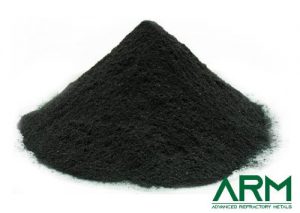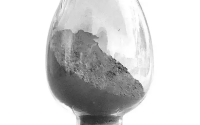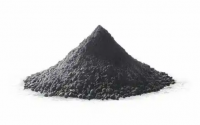Types of Molybdenum Powder: A Comprehensive Guide
Introduction
Molybdenum powder is a versatile and high-performance material known for its exceptional properties. These powders come in various types, each with unique characteristics that make them suitable for different industrial applications. This article provides an in-depth look at the different types of molybdenum powder and their specific uses.

Pure Molybdenum Powder
Description: Pure molybdenum powder is characterized by its high purity, with minimal impurities. It is essential for applications that require consistent and reliable performance under extreme conditions.
Applications: This powder is used in high-temperature and high-strength applications such as electronics, aerospace, and advanced manufacturing. Its properties make it ideal for components in jet engines, semiconductor devices, and industrial machinery.
Properties: It has a high melting point of approximately 2,623°C (4,753°F), excellent thermal and electrical conductivity, and strong resistance to corrosion.
Related reading: Molybdenum Powder Types & Applications
Spherical Molybdenum Powder
Description: Spherical molybdenum powder is produced using atomization processes that create particles with a spherical shape. This shape enhances the powder’s flowability and packing density.
Applications: It is ideal for additive manufacturing (3D printing), thermal spray coatings, and powder metallurgy. The uniform particle size distribution ensures consistent results in these high-precision applications.
Properties: It boasts high flowability, good packing density, and excellent thermal and mechanical properties.
Amorphous Molybdenum Powder
Description: Amorphous molybdenum powder lacks a well-defined crystalline structure. This unique form is achieved through specific production techniques that result in a non-crystalline state.
Applications: It is used in applications requiring high reactivity and specific surface area, such as catalysts and certain chemical reactions. Its structure provides a larger surface area for reactions to occur.
Properties: Such powder has a high surface area, increased reactivity, and unique structural properties that differentiate it from crystalline forms.
Crystalline Molybdenum Powder
Description: Crystalline molybdenum powder has a well-defined crystalline structure, making it suitable for applications that require consistent mechanical properties.
Applications: This powder is used in electronic components, high-strength alloys, and thermal management materials. Its stable structure ensures reliability in these critical applications.
Properties: It offers high thermal and electrical conductivity, excellent mechanical properties, and stability under extreme conditions.
Nano Molybdenum Powder
Description: Nano molybdenum powder consists of particles in the nanometer range. This form is produced through advanced nanotechnology techniques.
Applications: It is used in advanced applications such as nanotechnology, electronics, and medical devices. The small particle size allows for enhanced properties and functionality in these fields.
Properties: Such nano powder has a high surface area, enhanced reactivity, and improved mechanical and thermal properties compared to larger particle sizes.
Doped Molybdenum Powder
Description: Doped molybdenum powder is alloyed or doped with other elements to enhance specific properties. These dopants can improve characteristics such as oxidation resistance or mechanical strength.
Applications: This powder is used in specialized applications where tailored properties are required, such as in high-temperature environments or corrosive settings.
Properties: Depending on the dopant, doped Mo powder can have enhanced high-temperature strength, improved oxidation resistance, and other tailored properties.
Fine Molybdenum Powder
Description: Fine Mo powder consists of very small particles, typically in the micrometer range. This type of powder is produced through precise milling and size reduction techniques.
Applications: It is used in precision manufacturing processes such as metal injection molding and fine coatings, where small particle sizes are necessary for detailed work.
Properties: Fine Mo powder has high purity, excellent sintering properties, and good flowability, making it ideal for detailed and intricate applications.
Coarse Molybdenum Powder
Description: Coarse molybdenum powder has larger particle sizes, making it suitable for applications where larger particles are advantageous.
Applications: This powder is used in certain metallurgical processes and for manufacturing heavy-duty components that require robust materials.
Properties: Coarse Mo powder has good mechanical properties and is suitable for high-load applications.
High-Purity Molybdenum Powder
Description: High-purity molybdenum powder contains extremely low levels of impurities, ensuring the highest quality and performance.
Applications: It is critical for applications requiring high purity, such as semiconductor manufacturing and high-precision electronics.
Properties: It provides reliability and excellent performance, particularly in demanding environments.
Spray-Dried Molybdenum Powder
Description: Spray-dried molybdenum powder is processed through spray drying to form granules, which enhance handling and application.
Applications: This powder is used in powder metallurgy, thermal spraying, and other applications where uniform granule size is beneficial.
Properties: It offers uniform granule size, good flowability, and ease of handling, making it suitable for various industrial processes.
Conclusion
Molybdenum powder comes in various types, each offering distinct properties and advantages tailored to specific industrial needs. Whether it’s pure, spherical, amorphous, or nano Mo powder, each type provides unique benefits that cater to high-performance applications in aerospace, electronics, metallurgy, and beyond. As technology advances, the versatility and applications of Mo powder continue to expand, making it an essential material in modern industry. For more details, please check Advanced Refractory Metals (ARM).



